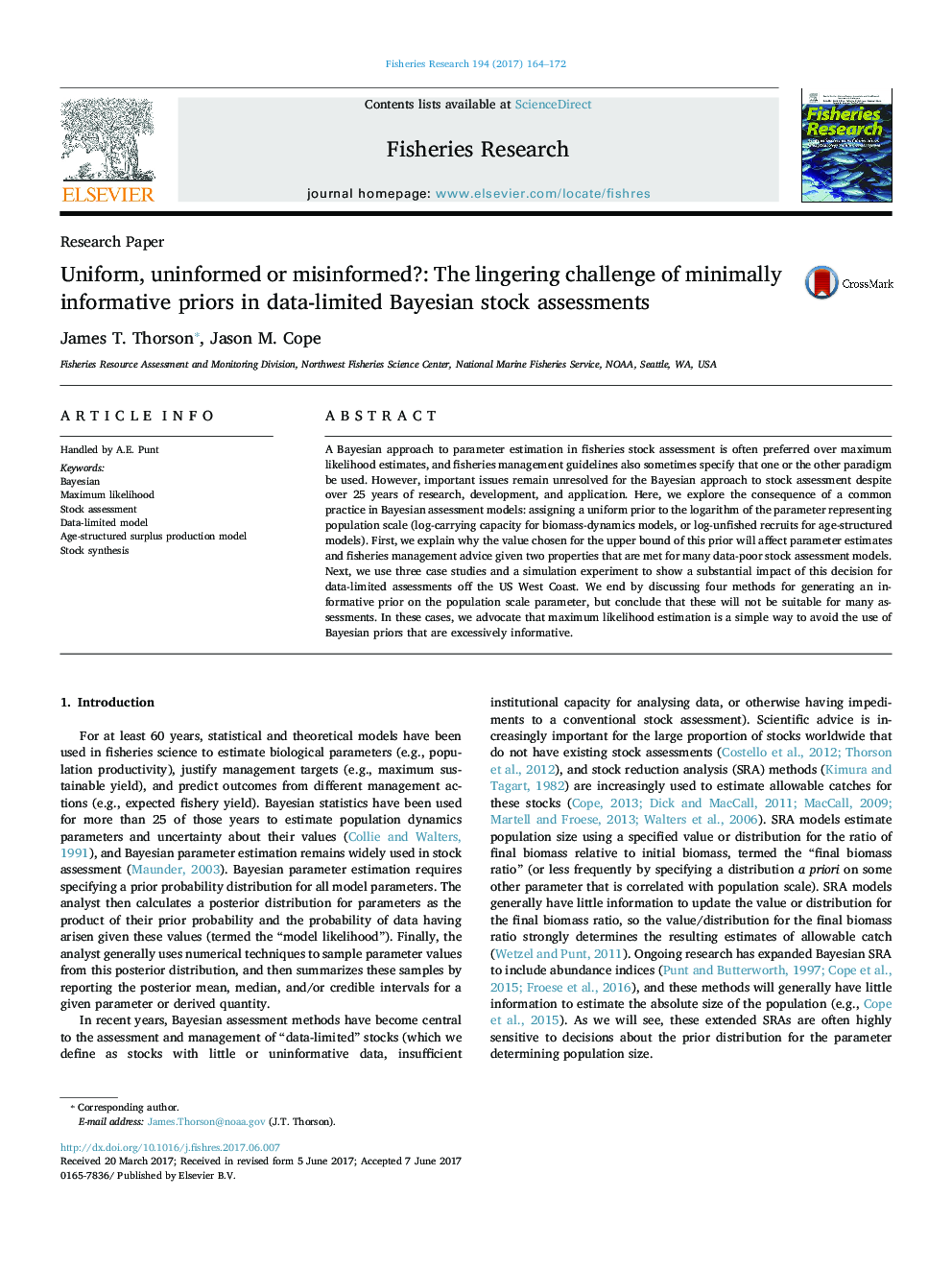| Article ID | Journal | Published Year | Pages | File Type |
|---|---|---|---|---|
| 5765427 | Fisheries Research | 2017 | 9 Pages |
Abstract
A Bayesian approach to parameter estimation in fisheries stock assessment is often preferred over maximum likelihood estimates, and fisheries management guidelines also sometimes specify that one or the other paradigm be used. However, important issues remain unresolved for the Bayesian approach to stock assessment despite over 25 years of research, development, and application. Here, we explore the consequence of a common practice in Bayesian assessment models: assigning a uniform prior to the logarithm of the parameter representing population scale (log-carrying capacity for biomass-dynamics models, or log-unfished recruits for age-structured models). First, we explain why the value chosen for the upper bound of this prior will affect parameter estimates and fisheries management advice given two properties that are met for many data-poor stock assessment models. Next, we use three case studies and a simulation experiment to show a substantial impact of this decision for data-limited assessments off the US West Coast. We end by discussing four methods for generating an informative prior on the population scale parameter, but conclude that these will not be suitable for many assessments. In these cases, we advocate that maximum likelihood estimation is a simple way to avoid the use of Bayesian priors that are excessively informative.
Related Topics
Life Sciences
Agricultural and Biological Sciences
Aquatic Science
Authors
James T. Thorson, Jason M. Cope,
